Winter 2020
Postcards from the Edge
– Cynthia Arnson, Benjamin Gedan, Michael Penfold, Rossana Castiglioni, Catalina Lobo-Guerrero, Augusto de la Torre, and Jim Shultz
A wave of protest swept Latin America in 2019. Country experts examine the common threads – as well as the unique factors at play in each nation.
Introduction: The Common Threads of 2019
Latin America is no stranger to mass mobilizations, from the deafening banging of pots and pans (cacerolazos) to protest the high cost of living in countries such as Argentina, to the massive demonstrations in Guatemala in 2015 that brought down President Otto Pérez Molina’s corrupt administration.
Yet the depth and ferocity of the rage that spilled into the streets in 2019 in Bolivia, Chile, Colombia, Ecuador, Haiti, and Venezuela surprised leaders and long-time observers. The causes of this new wave of protests were diverse, defying easy generalizations.
In Bolivia, for example, former supporters of President Evo Morales joined the political opposition and took to the streets to demand his resignation following electoral fraud connected with his quest for a fourth term.
In Chile, subway fare hikes triggered months of demonstrations, filling downtown Santiago at one point with over a million demonstrators expressing dissatisfaction with the high cost of living, persistent inequality, and an outdated political Constitution. At stake was a model, largely stewarded by governments of the center-left, that produced decades of steady economic growth and reductions in poverty, while leaving too many Chileans close to the brink financially and without access to quality public services.
If 2019 will be remembered as the year the Latin American street exploded in anti-incumbent indignation, 2020 will be marked by efforts to put the genie back in the bottle, or at least constructively direct public anger to promote meaningful change.
Yet some common threads are evident. Following a “golden decade” of growth and poverty reduction in South America in the 2000s, driven by high prices for the region’s commodities, Latin American economies have stagnated for the last five years. According to the UN’s Economic Commission on Latin America and the Caribbean, growth from 2014 to 2020 will be the lowest in seven decades—even after excluding Venezuela’s catastrophic collapse. Per capita GDP growth has gone down, as has per capita consumption and the availability and quality of employment.
All this stands in contrast to the historic gains of the early 2000s. As reported by the World Bank in 2012, the region’s middle class grew during the boom years by 50 percent, to about a third of the population, even though the largest class was still deemed “vulnerable.” By 2016, however, the World Bank reported that the pace of middle class growth had stalled. This left millions of Latin Americans in fear of sliding back into poverty.
These economic phenomena have political parallels. Some 40 years after the beginning of the “third wave” of Latin American democratization, citizens in the region are increasingly fed up with democracy as a political system, and unsatisfied with the performance of democratic governments. According to a 2019 Latin American Political Opinion Project (LAPOP) survey, support for democracy is at an all-time low, falling 12 percentage points from a high of 69 percent in 2008 to 58 percent today. Satisfaction with the way democracy actually works stands at less than 40 percent region-wide. Trust in political institutions has also declined significantly since 2004. Regionally, only 28 percent of the public trusts political parties, 39 percent trusts the legislature, and less than 43 percent trusts the executive branch. As dismal as these findings are, they are better than averages reported by the Latin American polling firm Latinobarómetro, which found in 2018 that trust in political parties was at the historic low of 13 percent, and satisfaction with democracy at only 24 percent.
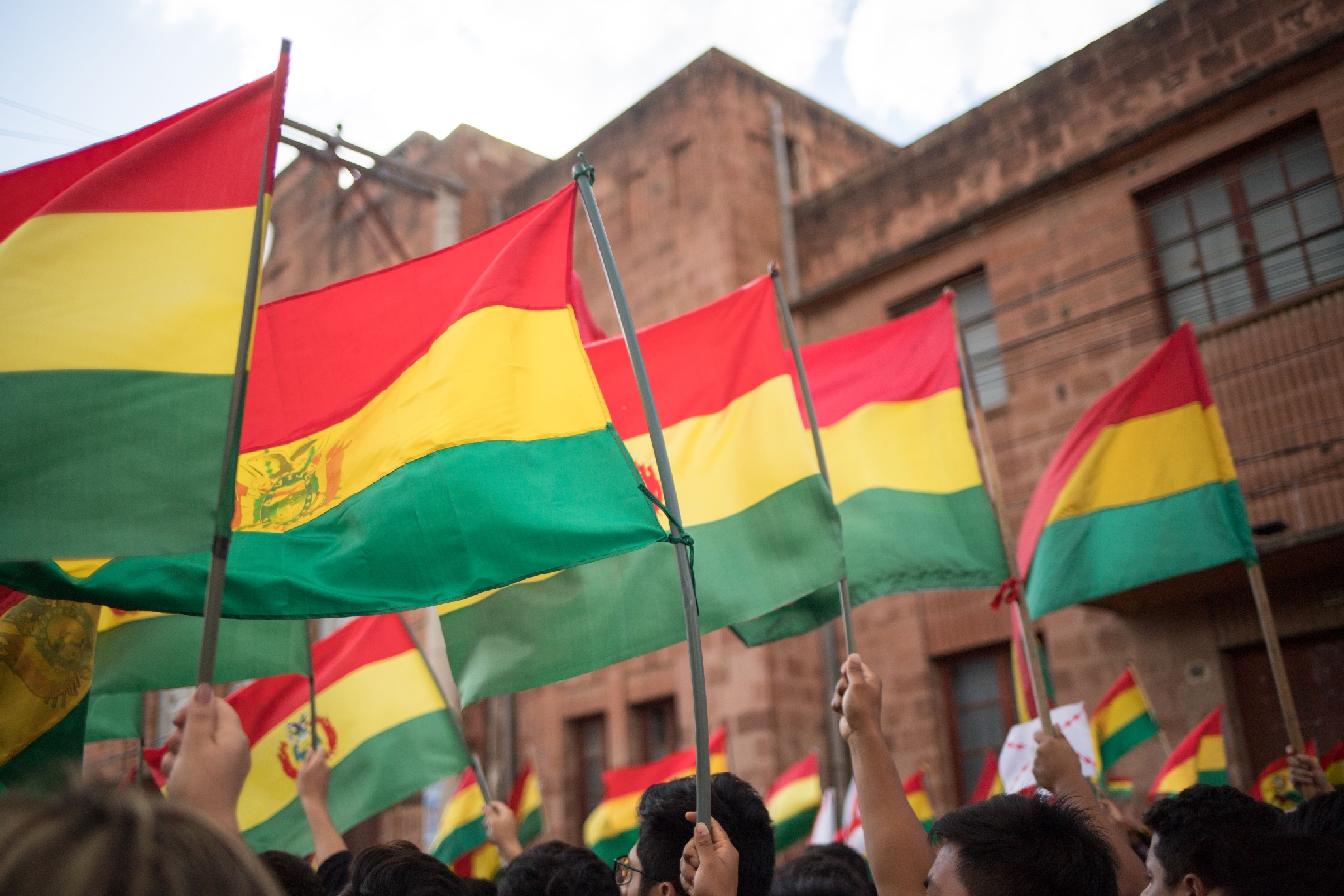
That public unhappiness with democracy, coupled with the painful economic trends, helps explain why Latin America had built up fuel for potential eruptions of popular discontent. But the underlying trends do not pinpoint specific triggers or measure the capacity of political leaders and institutions to respond. If 2019 will be remembered as the year the Latin American street exploded in anti-incumbent indignation, 2020 will be marked by efforts to put the genie back in the bottle, or at least constructively direct public anger to promote meaningful change.
Will 2019’s protests catalyze an inclusive response to the region’s long-standing inequities and democratic deficits, and thereby strengthen democratic governance and socio-economic conditions? Will they provoke greater repression, or the emergence of populists who channel discontent by disrespecting democratic norms? Will reforms satisfy a broad gamut of diverse expectations and demands, or are some sectors too radicalized? The global and regional economic environment is not likely to be forgiving. The prospects for ongoing instability are high indeed.
Cynthia J. Arnson is Director of the Wilson Center’s Latin American Program. Benjamin Gedan is Deputy Director of the Latin American Program.
Repression and Regression: Venezuela
.jpg)
Protests in Venezuela in January through May 2019 gained worldwide attention. But it is easy to forget that it was the latest battle in a six-year conflict. The country’s opposition has sought a change of government, leading to a sustained violent and authoritarian repression of dissent by the regime led by Nicolás Maduro.
The results have been devastating. Hundreds of protesters were killed in all three episodes, and thousands have been jailed – including key political actors and journalists. Over 4.5 million people have now left Venezuela, triggering the largest migration crisis in the Western hemisphere.
Yet street mobilizations in Venezuela in 2014, 2017 and 2019 have failed to achieve even the smallest concessions. Each wave has been a pretext for the ruling elite to curtail political and civil rights, and to grant more power to the military. The loyalty of the armed forces to the regime has been won by, among other things, giving the military direct control over Venezuela’s oil and mining sectors. The regime has also deployed militia-like groups, locally known as colectivos, to intimidate and repress civilians, and to shield state security forces from direct responsibility for human rights violations.
Citizens expect the crisis will continue, even though they see the de facto government as illegitimate.
Especially in poor areas in large cities like Caracas, the colectivos also control food and security services under the mantle of social grassroots groups sponsored by the revolutionary party. In a hyperinflationary economy, the size of which has been reduced by two thirds since Maduro came to power in 2013, the colectivos’ control of food distribution has allowed the regime to demobilize popular sectors that are increasingly dependent on government handouts. Many colectivos also have strong links to armed criminal organizations.
Over the past six years, the government has deepened and perpetuated a perverse cycle of political violence in each protest cycle. Student protests over an attempted rape of a fellow student on the university campus spun quickly into chaos in mid-February 2014, exacerbated by a harsh police response. Once the protests were controlled, the regime blamed two opposition parties and declared them illegal, and jailed their leaders.
The Maduro regime’s decision to block a constitutional recall referendum for the presidency in October 2016, accompanied by a Supreme Court ruling to declare any decision by the opposition-dominated National Assembly null and void, sparked a second wave of protests in April 2017. Four months of demonstrations demanding democratic change were met by violence, including the deaths of more than 150 protestors. The Maduro regime continued its ban on opposition parties and removed the attorney general, who had become critical of the government for dismantling governmental checks and balances. It also convened an unconstitutional National Constituent Assembly to bypass the National Assembly formally.
The 2014 and 2017 protests were the prelude to 2019’s deep governance and legitimacy crisis. When Maduro’s attempt to win a second term by rigging the 2018 presidential election led to strong international condemnation, the National Assembly formally blocked his inauguration. Juan Guaidó, the leader of the opposition-held Assembly, declared himself ready to assume the presidency until open elections could be held in January 2019. More than 60 countries recognized Guaidó as Venezuela’s interim president, and citizens peacefully mobilized in the streets for more than two months to support this effort to precipitate a democratic transition.
_copy.jpg)
Maduro has clung to power with the political support of the military’s high echelon, leading to a dangerous stalemate between de jure and de facto presidential figures that has lasted more than a year. In August 2019, public opinion polls put the number of Venezuelans who believed Maduro should step down at more than 84 percent. But 27 percent thought that outcome was very unlikely. Citizens expect the crisis will continue, even though they see the de facto government as illegitimate.
However, Maduro continues to try and hold on. Despite the fact that opposition political parties control a two-third majority of Congress, Maduro attempted to dissolve the National Assembly on January 5, 2020 – exiling more than 20 legislators, bribing deputies, and using military force to impede access to the building. The opposition quickly reunited, and Guaidó climbed through the wrought iron gates of parliament to regain physical control over the legislature and defeat Maduro’s latest ploy.
The conflict in Venezuela is compounded by U.S. sanctions on financial, oil, and other sectors, as well as broad individual sanctions enacted by the U.S. and Europe against key figures of the regime. Without a solution to the governance crisis, the international community will be unwilling to remove them. So the Venezuelan people will continue waiting for a restoration of constitutional order, economic stabilization, a rebuilding of its oil sector, and a return to democracy. This outcome is very unlikely in the near future.
Michael Penfold is a Fellow in Wilson Center’s Latin American Program and a Professor of Political Science at the Instituto de Estudios Superiores de Administración (IESA), Business and Public Policy School, Venezuela.
Institutional Rigidity and Social Explosion: Chile
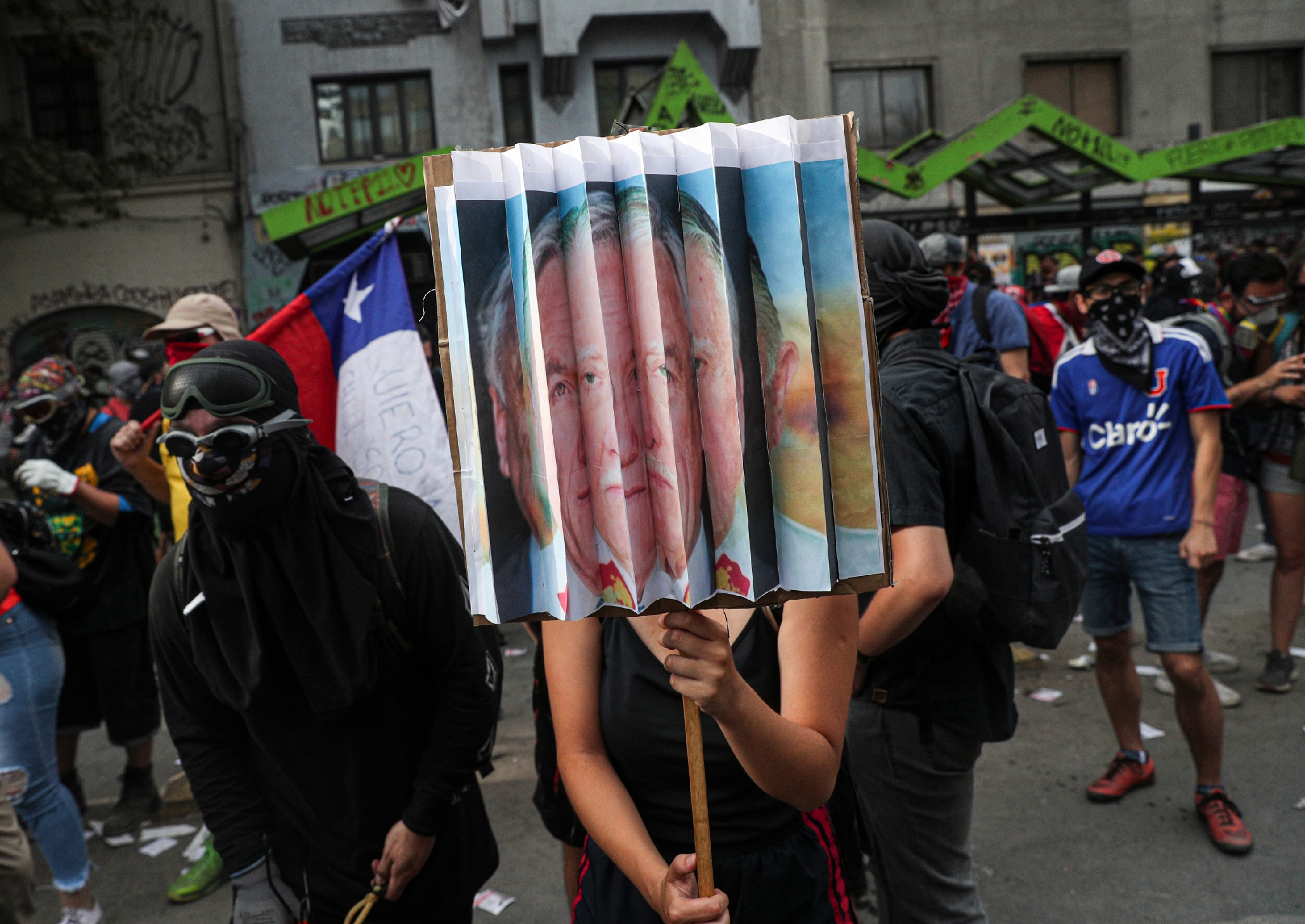
In early October 2019, the Chile’s government announced a 30-peso (or 4 cent) increase in the price of subway tickets. It met with broad criticism, and students called on the public to resist the measure by evading fares. They also opened the gates to several stations by force, and called for mass turnstile jumping, as they chanted: “Evade, don’t pay, fighting a different way.”
In a few days, these protests spawned massive, nationwide demonstrations. Most protests were peaceful, but a few of them were accompanied by property destruction, looting, and physical violence. The demonstrations reached their peak on October 25, 2019, when approximately 1.2 million citizens gathered in Santiago for the largest mobilization in Chilean history. According to the newspaper La Tercera, about 4.3 million Chileans took to the streets over the course of the protests. By comparison, about 3.8 million Chileans voted for President Sebastián Piñera in the 2017 presidential election.
The social explosion of 2019 also lays bare challenges to democratic representation that Chilean political actors have been unable (or unwilling) to resolve.
It soon became clear that Chileans were not mobilizing merely against an increase in subway fares. Demonstrators expressed a variety of grievances, among them low pensions and salaries, access to quality health care, and gender discrimination. On the surface, the glue that binds these multi-faceted demands is a rejection of inequality. But a broader issue lurks underneath: a democracy that has been incapable of dealing with citizens’ grievances.
Nationwide mobilizations in Chile have reflected such shortcomings since the country’s 1990 democratic transition, reflecting institutions’ inability to process social demands and growing public discontent. The rigid design of Chilean political institutions, and particularly the Political Constitution of Chile of 1980, is partly to blame. The military regime of General Augusto Pinochet drafted that document to maintain and perpetuate the status quo, rather than create mechanisms for institutionally channeling demands for change “from below.”
The social explosion of 2019 also lays bare challenges to democratic representation that Chilean political actors have been unable (or unwilling) to resolve. Stresses in Chile’s system of democratic representation developed gradually, and have manifested themselves in three principal areas.
First, identification with political parties and coalitions, as well as trust in political institutions has been declining. In 1993, fully 70 percent of adult Chileans told pollsters that they identified with a political party; but by January 2020, that figure dropped to an astonishing 14 percent. Polling also shows an even larger decline of trust in formal political institutions, such as the government (5 percent), Congress (3 percent), and political parties (2 percent).
.jpg)
A second stressor in Chilean democracy has been several waves of protest since 2006 over issues as diverse as education, pensions, and gender. Despite some policy changes, particularly during the second administration of President Michelle Bachelet (from 2014-2018), protests did not lead to structural transformations. The increasingly precarious position of middle-income earners has led to an increasing politicization of inequalities. The World Bank estimated in 2018 that per capita income in Chile was over $25,000, yet roughly half of the Chilean population earns less than $523 per month. Chileans other than the wealthy spend more than they earn. Middle income earners are also frustrated that they are not poor enough to receive subsidized social benefits, and yet face workforce challenges –especially women – and unequal access to quality healthcare and education.
Third, and perhaps most significantly, Chile has experienced a remarkable drop in electoral participation. Approximately 85 percent of the electorate cast a vote in 1989, during the first presidential election to take place since the 1973 breakdown of democracy. Yet since 2012, turnout has been around or below 50 percent. In fact, a United Nations Development Programme study published in October 2017 stated that Chile has experienced the second largest drop in electoral participation worldwide (36 percent) over the past 25 years, surpassed only by Madagascar.
The confluence of these unresolved tensions in the political system contributed to Chile’s social explosion of October 2019. Since political actors and institutions lack social legitimacy, negotiating a way out of the current crisis will require intervention by a broad range of civil society actors, together with increased citizen participation. Yet a resolution to Chile’s deep political crisis also requires the involvement of the country’s political parties, which, in any healthy democracy, are vital channels of political representation.
Rossana Castiglioni (Ph.D. University of Notre Dame) is Associate Professor of Political Science at Universidad Diego Portales in Santiago, Chile.
Strikes and Counterstrikes: Colombia

Hundreds of thousands of Colombians took to the streets on November 21, 2019, in indignation and hope. They brought with them a variety of grievances: anger at President Iván Duque and his right-wing party, Centro Democrático; lack of funding for education and pensions; persistent corruption; human rights, dilatory implementation of a recent peace accord, as well as insecurity, fracking, and gender-based violence and inequality.
By nightfall, the streets filled up with the sounds of cacerolazo, a spontaneous, massive pot banging. “El Paro” was not going to fade away quietly.
It all started in early October, when the National Strike Committee, comprised of trade unions and student organizations, called for a work stoppage to protest a so-called “package” of labor, pension, and tax reforms that would deepen the country’s already high level of inequality, which is the second worst in Latin America. President Duque denied that his government was planning to institute these economic measures, but the November strike plans continued undeterred.
When the demonstrations started in November 2019, 70 percent of Colombians believed that El Paro represented an opportunity for change, not a threat to the country’s democracy.
Few observers expected such a turnout that day – or on the ones that followed; Colombia has a long history of criminalizing social protest, with conservative elites and leading members of the armed forces labelling demonstrators as guerrilla-linked or -inspired terrorists.
Since the government and guerrillas of the Revolutionary Armed Forces of Colombia (FARC) signed a peace treaty in late 2016, violence has decreased dramatically. Although war with other illegal armed groups lingers in certain rural areas, a post-conflict, nonviolent, and more politically diverse debate has rapidly gained ground in most major cities.
Yet members of Duque’s cabinet and party took up an old cry by claiming that El Paro was part of a leftist international conspiracy orchestrated by Venezuelan President Nicolás Maduro.
Except for a few acts of vandalism, the protests were mostly peaceful. Anti-riot police attacked protesters, nonetheless. Hundreds were detained, more than 700 (civilians and police) were injured, and four people were killed. Among the casualties was an 18-year-old student, Dilan Cruz, who was shot dead in the country's capital, Bogotá. He has since become a symbol for young protesters who call themselves “the generation that knows no fear.”
That generation is helping drive the protests. A Centro Nacional de Consultoría poll revealed that 65 percent of young people between the ages of 18 and 25 have actively participated in the demonstrations. They are calling for profound, structural change in a country that, despite decades of armed conflict, has long been perceived as one of the most stable democracies in the region.

Duque has summoned experts to participate in a “National Conversation” with all sectors of society to resolve the current crisis and avert further cycles of protest. But Colombians are divided and skeptical about these conversations resolving institutional and leadership problems.
President Duque’s unpopularity reached a high of 70 percent in the most recent Gallup Poll taken in November, after the protests had begun. But there is also public distrust in the National Strike Committee. As 2019 ended, the Committee’s meetings with representatives of previously-excluded sectors expanded its original 13-point agenda into a 104 point document that now boasts contradictory aims.
Although Duque has opened a channel with Committee leaders, the strike organizers have refused to participate in any of the “National Conversation” official sessions, and vow to continue protesting until the government enters into substantive negotiations.
When the demonstrations started in November 2019, 70 percent of Colombians believed that El Paro represented an opportunity for change, not a threat to the country’s democracy. In 2020, Colombians will see if the chasm can be bridged, or whether new rounds of demonstrations, which started again on January 21, can pose a challenge to the governability of the nation.
Catalina Lobo-Guerrero is a Colombian freelance journalist and the Spanish editor for the Global Investigative Journalism Network. Her work has been published by The New York Times, El País, The Guardian, Semana, La Silla Vacía, amongst other media outlets.
Surprise and Social Upheaval: Ecuador
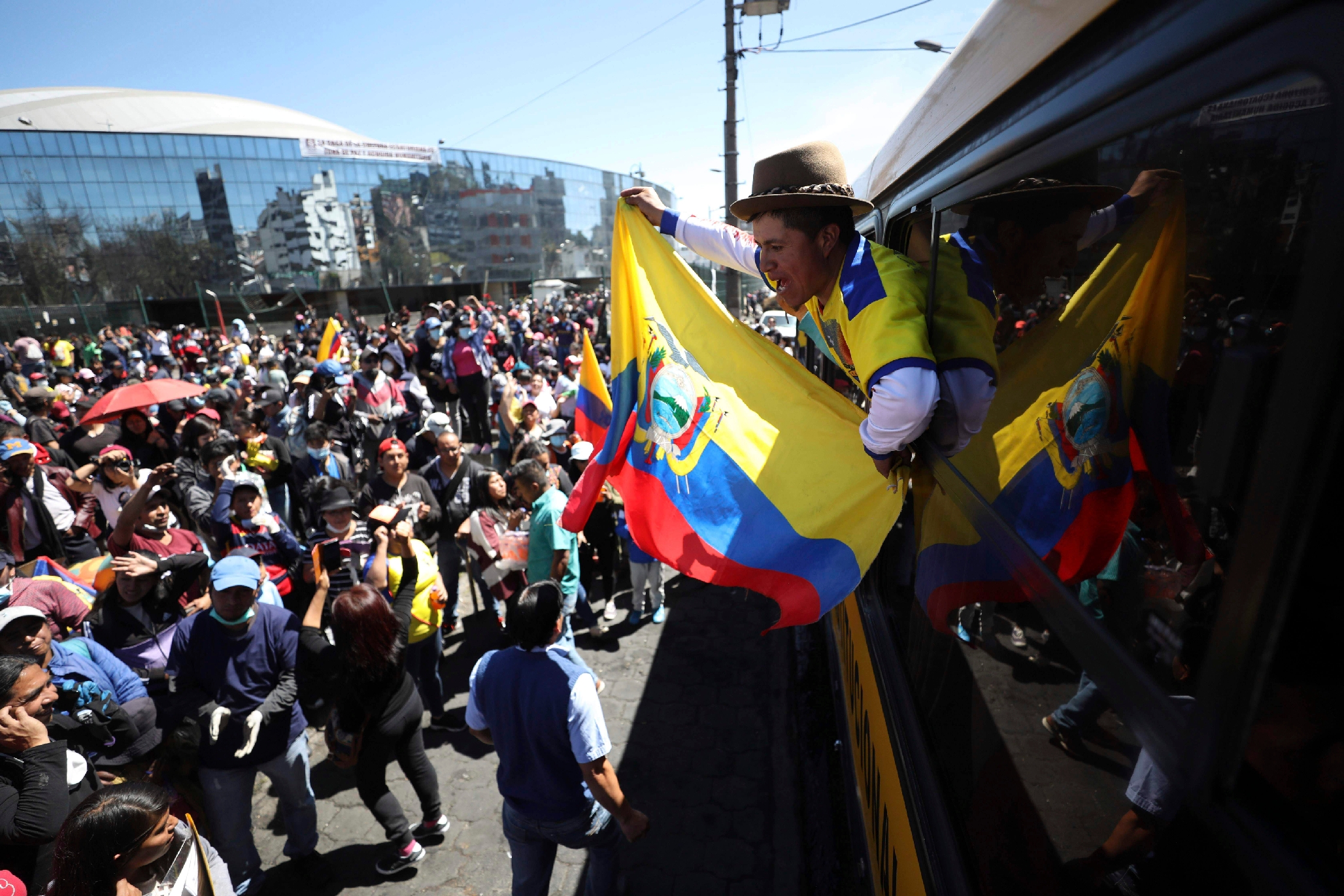
In the first half of October 2019, violent street demonstrations spread throughout Ecuador.
The tumult blocked major highways, damaged businesses in rural and urban areas, and destroyed valuable public property. Major cities, particularly Quito, the capital city, looked and felt like war zones. Demonstrators even made persistent, but unsuccessful attempts, to disrupt the supply of water and electricity, as well as oil pipelines.
The trigger for this unexpectedly virulent social convulsion was Presidential Decree 883, which eliminated subsidies to the price of gasoline and diesel that, although adjusted occasionally, had been in place since the 1970s, when Ecuador became an oil exporter.
What made the decree even more combustible was that it came as a surprise. Most believed that the government would instead raise the value-added (VAT) tax rate. The last-minute, unexpected switch left the government no time to explain its momentous decision, nor to establish a credible mechanism to compensate the vulnerable population adversely affected by higher fuel prices.
The social discontent triggered by the unexpected fuel subsidy elimination had amplifiers as well. Well-organized cells of supporters of Rafael Correa, the previous populist-authoritarian president, explicitly declared their intention to topple President Lenin Moreno.
The October 2019 social convulsion is a wakeup call that marks an inflection point in Ecuadorian history.
Organized agitators may have had foreign financing and support. Interior Minister María Paula Romo, assisted by the security and intelligence forces, presented evidence of this aid to Ecuador’s judiciary, and as a result, some visible leaders of the Correa-based opposition were placed under preventive detention.
However, Ecuador’s elites and its armed forces remained firm in their support of the constitutional order. And as violence spread and intensified, some of Ecuador’s most visible indigenous leaders, although also opposing the decree, openly disassociated themselves from agitators who promoted looting and vandalism.
Importantly, the government and armed forces also made an explicit choice not to use lethal force to restore public order. That may have lengthened the period of violent unrest, yet the decision testified to the Moreno administration’s tolerance and aversion to repression.
In the end, however, the government was compelled to cancel Decree 833 after reaching an agreement with representatives of the nation’s indigenous peoples. Yet larger questions raised by the episode loom large. Why did the October convulsion push Ecuador’s underlying social fractures and forces to the surface now?
Socioeconomic inequalities in Ecuador are offensively high, but they have been high for centuries. Moreover, like many other countries in the region, Ecuador experienced a wave of social progress in its recent past. Between 2003 and 2014, poverty rates fell from 45 percent of the population to less than 20 percent, and the size of the middle class rose from 15 percent to 35 percent of the population. So we must look for answers in other tectonic changes in social realities and perceptions. Three of these factors are key.
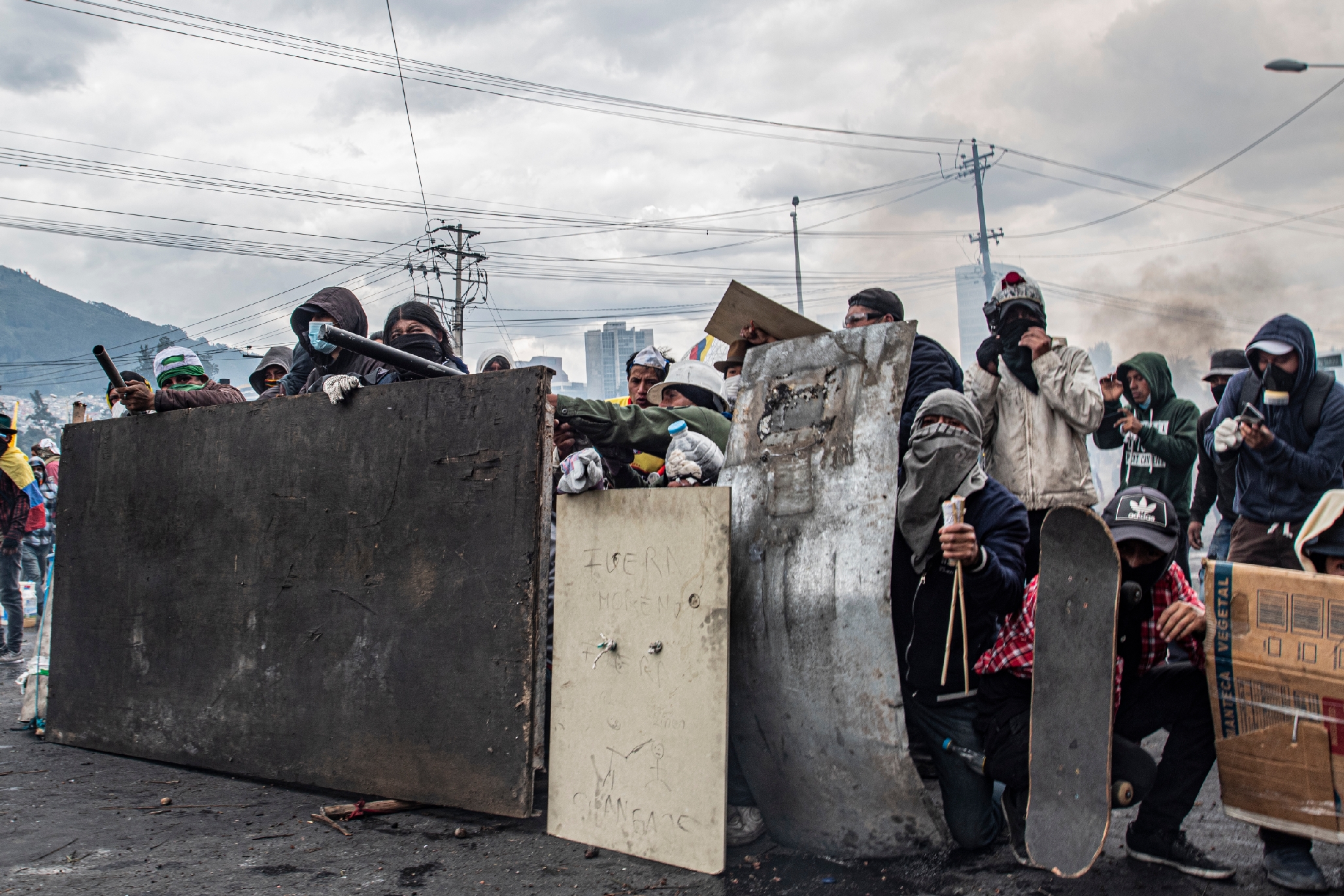
First, October 2019 provided a channel to vent deeply frustrated expectations. With upward mobility and rising purchasing power at the base of the social pyramid, citizens’ aspirations have risen greatly with respect to their lives, their jobs, and the quality of public services they expect. Yet in areas such as education, health, pensions, public transport, and public safety in the streets, these services did not keep pace with expectations.
Second, a sudden stop in Ecuador’s growth has stymied its social progress. Lifted by an extraordinary bonanza in the price of its main exports, particularly oil, Ecuador’s economy had been expanding at a rate of about 5 percent per year. But an oil price collapse in 2014 caused economic activity to screech to a halt. Now, it is shrinking. This abrupt halt and reversal in growth, coupled with a sharp rise in under-employment and informal labor, has added to the underlying social stress.
Third, a widespread perception of unfairness that goes beyond income inequality has created a deep malaise. The perception that money has invaded every sphere of public life, and buys unequal privileges, is exacerbated by pervasive corruption that reached unprecedented levels during the Correa administration.
The October 2019 social convulsion is a wakeup call that marks an inflection point in Ecuadorian history. What is at stake now is nothing less than the nation’s future. Ecuador can either find unity in its diversity, or succumb to a spiral of irreconcilable divisions.
Augusto de la Torre was the World Bank’s Chief Economist for Latin America until 2016. He teaches at Columbia University and is the Director of the Economics Research Center at the Universidad de las Américas in Quito.
The Persistence of Protest: Bolivia
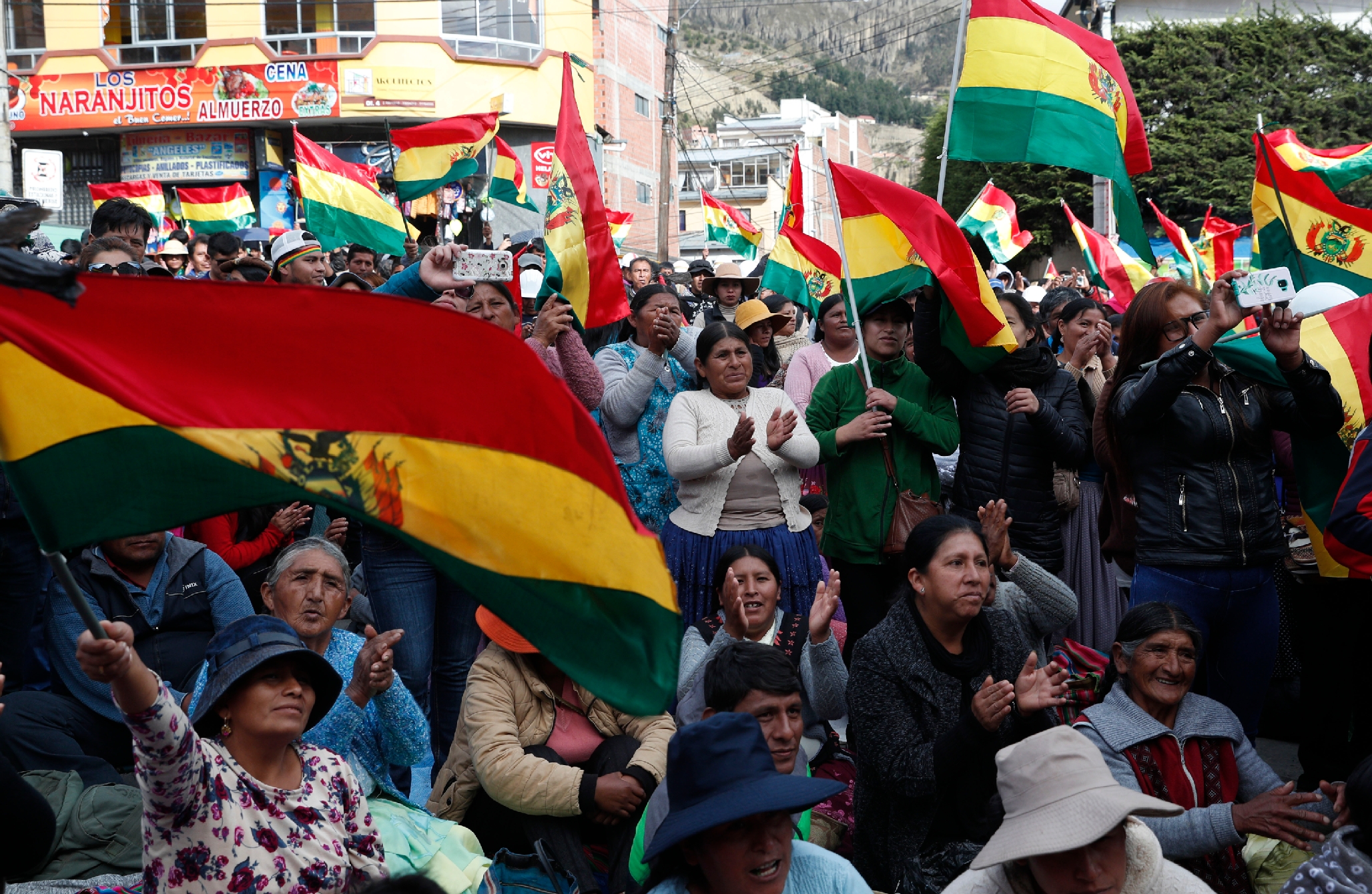
Bolivia has two levers of political power. One is elections. Bolivians know – personally and painfully – what it meant to live under a dictatorship. They do not take democracy for granted.
The second lever is protest, which is a fierce and enduring feature of Bolivia’s political culture. At times, these protests are enormous. Cochabamba, a city of half a million people, shut down three times in 2000, when massive general strikes aimed at taking back public control of the privatized water system. Questions about the legitimacy of last year’s presidential elections pushed the country into turmoil in October.
Often, these two levers of power are complementary. In the run-up to President Evo Morales’ first election victory in 2005, his soon-to-be Vice President Alvaro García Linera, observed: “We have won many victories through protest. But there are some things we can only achieve by having the power of the state. And there are two ways to do that, buying guns or winning elections.”
After the widespread violence and fear of the past few months, politicians of all stripes will aim to impress voters with good behavior.
Linera argued for elections. Yet it was the powerful Bolivian street rebellions of the early 2000s – over water privatization, IMF belt-tightening, and control of the country’s vast gas and oil reserves – that paved the way for Morales’ historic victory.
If protest helped bring Morales to power it also was also the engine that drove his ouster. His quest for a fourth term as president faced legitimacy issues from the start. It violated the constitution his own party had written, not to mention also defying the results of a popular referendum that Morales lost when he called it in 2016.
Following the voting on October 20, 2019, there was a sudden 24-hour freeze in the counting of ballots. When the blackout was lifted, Bolivia’s Supreme Electoral Court ruled that Morales had eked out a narrow victory, allowing him to avoid a difficult runoff with the second-place candidate.
As evidence of electoral fraud grew, the president’s opponents took to the streets for two weeks and shut down virtually every major city in the country. Former Morales supporters joined the opposition, while the president’s backers (based primarily in the countryside) responded with direct actions, including attempts to block fuel and food supplies from reaching the cities.
Where the two sides met, there was ugly violence, including deaths and the kidnapping of a local mayor. A long-time Bolivian friend told me, “It is just as intense and firm as it was in the Water Revolt, but now it is the people versus the people.” In Cochabamba, rank-and-file policemen climbed to the roof of their police station and declared that they would no longer repress their own families in the streets. Within twenty-four hours, police in all the other major cities, including the capital, had joined in. Two days later, on November 10, 2019, Morales was gone.
.jpg)
Was Morales’ ouster a military coup? Bolivia’s president did ultimately lose support from the military, which issued a public statement encouraging his departure as the only way to bring peace to an exploding country. While Latin America has a long and bloody history of generals ousting presidents, it is usually accomplished with tanks, and not a press statement.
There are moments in Bolivian politics when one can feel the gears shifting from protest to elections. We are in such a moment now. The interim government that replaced Morales (and used violent repression to quash the ongoing protests against it) has scheduled a new election for May 2020, with a runoff in June if required. The factions vying for power are devising strategies and choosing candidates. After the widespread violence and fear of the past few months, politicians of all stripes will aim to impress voters with good behavior. Campaigns, and not protests.
What will happen after the new vote? It depends upon whether the new election is deemed legitimate and clean by all sides. (This is not a given.) The strategic choices made by those who lose will also play a part. Every faction still has two levers of power. In Bolivia, the culture and power of protest will not disappear.
Jim Shultz is founder and executive director of The Democracy Center, and works with social justice and ecological activists on five continents. He is the author of the forthcoming memoir, My Other Country: Nineteen Years in Bolivia.
Cover Photograph: Protest supporting Juan Guaidó in the Plaza Alfredo Sadel, Caracas, Venezuela, on March 4, 2019, (Image by Eddvlp via Shutterstock)
